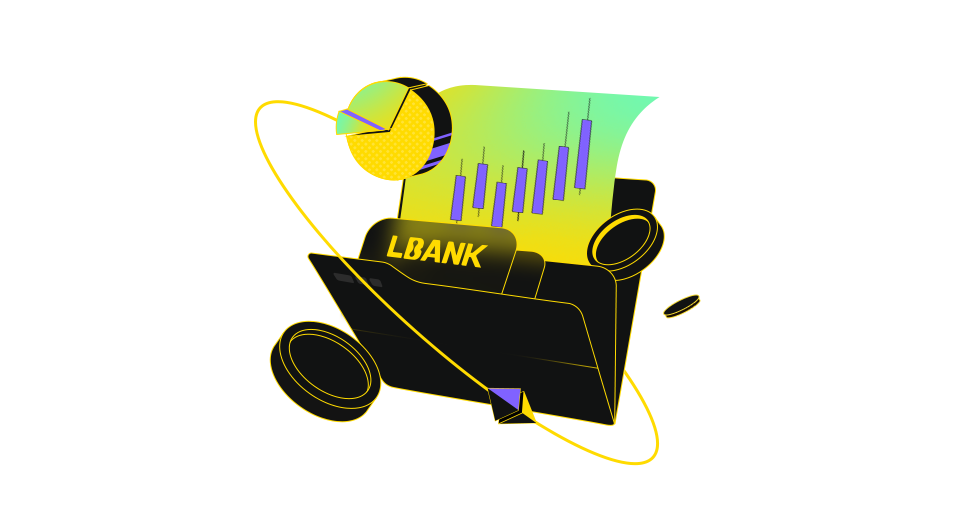How does investor sentiment influence cryptocurrency market volatility?
2025-04-17
Beginners Must Know
"Understanding the Impact of Investor Emotions on Cryptocurrency Price Fluctuations for New Traders."
How Investor Sentiment Influences Cryptocurrency Market Volatility
The cryptocurrency market is notorious for its extreme price swings, often driven by the collective emotions and perceptions of investors. Unlike traditional financial markets, which are influenced by fundamentals like earnings reports and economic data, cryptocurrencies are highly sensitive to shifts in investor sentiment. This article explores the mechanisms through which sentiment shapes market volatility, backed by real-world examples and key indicators.
Understanding Investor Sentiment in Cryptocurrencies
Investor sentiment refers to the overall attitude of market participants toward a particular asset or the market as a whole. In cryptocurrencies, sentiment can swing rapidly due to the market's speculative nature, lack of regulation, and reliance on news and social media. Sentiment is often categorized as bullish (optimistic) or bearish (pessimistic), and these shifts can trigger dramatic price movements.
Key Drivers of Sentiment
1. Technical Indicators
Technical analysis tools are widely used to gauge sentiment. For example:
- The Relative Strength Index (RSI) measures whether an asset is overbought or oversold. An RSI above 70 suggests overbought conditions, signaling potential selling pressure, while an RSI below 30 indicates oversold conditions, possibly leading to buying interest.
- Bollinger Bands show price volatility. Narrow bands suggest low volatility, while widening bands indicate increasing volatility, often tied to sentiment shifts.
2. News and Social Media
Cryptocurrency prices are highly reactive to news headlines and social media trends. Positive developments, such as regulatory approvals or institutional adoption, can fuel buying sprees. Conversely, negative news like security breaches or regulatory crackdowns can trigger sell-offs. For instance, when Grayscale Ethereum Classic Trust (ETCG) traded at a steep discount to its net asset value in March 2025, it reflected bearish sentiment, leading to a predicted 33.64% price drop.
3. Regulatory and Economic Events
Government policies and macroeconomic trends play a significant role. Favorable regulations can boost confidence, while restrictive measures can dampen sentiment. Economic indicators like inflation or interest rate changes also influence investor behavior. For example, during periods of economic uncertainty, investors may flock to cryptocurrencies as a hedge, increasing volatility.
Case Studies: Sentiment-Driven Volatility
1. XTRA Bitcoin Inc. (CBTC)
In April 2025, CBTC exhibited 28% volatility, far exceeding the market average of 7%. This extreme volatility was attributed to mixed sentiment—some traders saw opportunity in price swings, while others avoided the asset due to its unpredictability.
2. Bluesky Digital Assets Corp. (BTCWF)
BTCWF’s price dropped 28.71% seasonally in April 2025, driven by weakening global market sentiment. Analysts remained cautious, highlighting how broader sentiment trends can impact individual assets.
3. Grayscale Litecoin Trust (LTCN)
A $2.9 million share issuance by LTCN in April 2025 created uncertainty. While new shares could attract investors, the increased supply also raised concerns about dilution, illustrating how sentiment can swing based on perceived supply-demand imbalances.
The Feedback Loop: Sentiment and Volatility
Sentiment and volatility often reinforce each other. Positive news can trigger buying, driving prices up and attracting more investors, further fueling volatility. Conversely, negative sentiment can lead to panic selling, exacerbating price declines. This feedback loop is particularly pronounced in cryptocurrencies due to their 24/7 trading and lack of centralized oversight.
Mitigating Sentiment-Driven Risks
Investors can manage sentiment-related volatility by:
- Diversifying portfolios to reduce exposure to single-asset swings.
- Using stop-loss orders to limit losses during sudden downturns.
- Staying informed about news and technical indicators to anticipate sentiment shifts.
Conclusion
Investor sentiment is a powerful force in the cryptocurrency market, capable of driving significant volatility. Factors like technical indicators, news, and regulatory developments shape sentiment, which in turn influences buying and selling behavior. Recent examples, such as ETCG’s discount and CBTC’s high volatility, underscore the market’s sensitivity to sentiment. For investors, understanding these dynamics is crucial to navigating the unpredictable yet opportunistic world of cryptocurrencies.
By monitoring sentiment indicators and staying attuned to market trends, investors can better position themselves to capitalize on volatility while mitigating its risks. The cryptocurrency market’s future will likely continue to be shaped by the ebb and flow of investor sentiment, making it a critical factor for anyone involved in this space.
The cryptocurrency market is notorious for its extreme price swings, often driven by the collective emotions and perceptions of investors. Unlike traditional financial markets, which are influenced by fundamentals like earnings reports and economic data, cryptocurrencies are highly sensitive to shifts in investor sentiment. This article explores the mechanisms through which sentiment shapes market volatility, backed by real-world examples and key indicators.
Understanding Investor Sentiment in Cryptocurrencies
Investor sentiment refers to the overall attitude of market participants toward a particular asset or the market as a whole. In cryptocurrencies, sentiment can swing rapidly due to the market's speculative nature, lack of regulation, and reliance on news and social media. Sentiment is often categorized as bullish (optimistic) or bearish (pessimistic), and these shifts can trigger dramatic price movements.
Key Drivers of Sentiment
1. Technical Indicators
Technical analysis tools are widely used to gauge sentiment. For example:
- The Relative Strength Index (RSI) measures whether an asset is overbought or oversold. An RSI above 70 suggests overbought conditions, signaling potential selling pressure, while an RSI below 30 indicates oversold conditions, possibly leading to buying interest.
- Bollinger Bands show price volatility. Narrow bands suggest low volatility, while widening bands indicate increasing volatility, often tied to sentiment shifts.
2. News and Social Media
Cryptocurrency prices are highly reactive to news headlines and social media trends. Positive developments, such as regulatory approvals or institutional adoption, can fuel buying sprees. Conversely, negative news like security breaches or regulatory crackdowns can trigger sell-offs. For instance, when Grayscale Ethereum Classic Trust (ETCG) traded at a steep discount to its net asset value in March 2025, it reflected bearish sentiment, leading to a predicted 33.64% price drop.
3. Regulatory and Economic Events
Government policies and macroeconomic trends play a significant role. Favorable regulations can boost confidence, while restrictive measures can dampen sentiment. Economic indicators like inflation or interest rate changes also influence investor behavior. For example, during periods of economic uncertainty, investors may flock to cryptocurrencies as a hedge, increasing volatility.
Case Studies: Sentiment-Driven Volatility
1. XTRA Bitcoin Inc. (CBTC)
In April 2025, CBTC exhibited 28% volatility, far exceeding the market average of 7%. This extreme volatility was attributed to mixed sentiment—some traders saw opportunity in price swings, while others avoided the asset due to its unpredictability.
2. Bluesky Digital Assets Corp. (BTCWF)
BTCWF’s price dropped 28.71% seasonally in April 2025, driven by weakening global market sentiment. Analysts remained cautious, highlighting how broader sentiment trends can impact individual assets.
3. Grayscale Litecoin Trust (LTCN)
A $2.9 million share issuance by LTCN in April 2025 created uncertainty. While new shares could attract investors, the increased supply also raised concerns about dilution, illustrating how sentiment can swing based on perceived supply-demand imbalances.
The Feedback Loop: Sentiment and Volatility
Sentiment and volatility often reinforce each other. Positive news can trigger buying, driving prices up and attracting more investors, further fueling volatility. Conversely, negative sentiment can lead to panic selling, exacerbating price declines. This feedback loop is particularly pronounced in cryptocurrencies due to their 24/7 trading and lack of centralized oversight.
Mitigating Sentiment-Driven Risks
Investors can manage sentiment-related volatility by:
- Diversifying portfolios to reduce exposure to single-asset swings.
- Using stop-loss orders to limit losses during sudden downturns.
- Staying informed about news and technical indicators to anticipate sentiment shifts.
Conclusion
Investor sentiment is a powerful force in the cryptocurrency market, capable of driving significant volatility. Factors like technical indicators, news, and regulatory developments shape sentiment, which in turn influences buying and selling behavior. Recent examples, such as ETCG’s discount and CBTC’s high volatility, underscore the market’s sensitivity to sentiment. For investors, understanding these dynamics is crucial to navigating the unpredictable yet opportunistic world of cryptocurrencies.
By monitoring sentiment indicators and staying attuned to market trends, investors can better position themselves to capitalize on volatility while mitigating its risks. The cryptocurrency market’s future will likely continue to be shaped by the ebb and flow of investor sentiment, making it a critical factor for anyone involved in this space.
Related Articles
How are RWAs different from traditional financial assets?
2025-05-22 10:16:47
How does DeFi differ from traditional finance systems?
2025-05-22 10:16:47
Can you elaborate on how equitable distribution is achieved in the new tokenomic model?
2025-05-22 10:16:46
What implications does this collaboration have for blockchain gaming acceptance?
2025-05-22 10:16:46
How does U.S. Steel Corporation's performance compare to its competitors in light of the new price target?
2025-05-22 10:16:46
Are there fees associated with different deposit methods on Binance?
2025-05-22 10:16:45
How complex are DeFi protocols involved in yield farming as mentioned in the research news about CoinGecko's Earn Platform?
2025-05-22 10:16:45
How important does Buterin consider institutional adoption of cryptocurrencies?
2025-05-22 10:16:45
What types of insights or findings should be highlighted during the analysis of news articles?
2025-05-22 10:16:44
What role do stablecoins play in facilitating transactions within the cryptocurrency ecosystem?
2025-05-22 10:16:44
Latest Articles
How does DeFi differ from traditional finance systems?
2025-05-22 10:16:47
How are RWAs different from traditional financial assets?
2025-05-22 10:16:47
Can you elaborate on how equitable distribution is achieved in the new tokenomic model?
2025-05-22 10:16:46
What implications does this collaboration have for blockchain gaming acceptance?
2025-05-22 10:16:46
How does U.S. Steel Corporation's performance compare to its competitors in light of the new price target?
2025-05-22 10:16:46
How complex are DeFi protocols involved in yield farming as mentioned in the research news about CoinGecko's Earn Platform?
2025-05-22 10:16:45
Are there fees associated with different deposit methods on Binance?
2025-05-22 10:16:45
How important does Buterin consider institutional adoption of cryptocurrencies?
2025-05-22 10:16:45
What is Mashinsky's perspective on the role of self-regulation within the crypto industry?
2025-05-22 10:16:44
What role do stablecoins play in facilitating transactions within the cryptocurrency ecosystem?
2025-05-22 10:16:44

Limited-Time Offer for New Users
Exclusive New User Benefit, Up to 6000USDT
Hot Topics
Technical Analysis

1606 Articles
DeFi

90 Articles
MEME

62 Articles
Cryptocurrency Rankings
Top
New Spot
No data
Expand
Fear and Greed Index
Reminder: Data is for Reference Only
73
Greed
